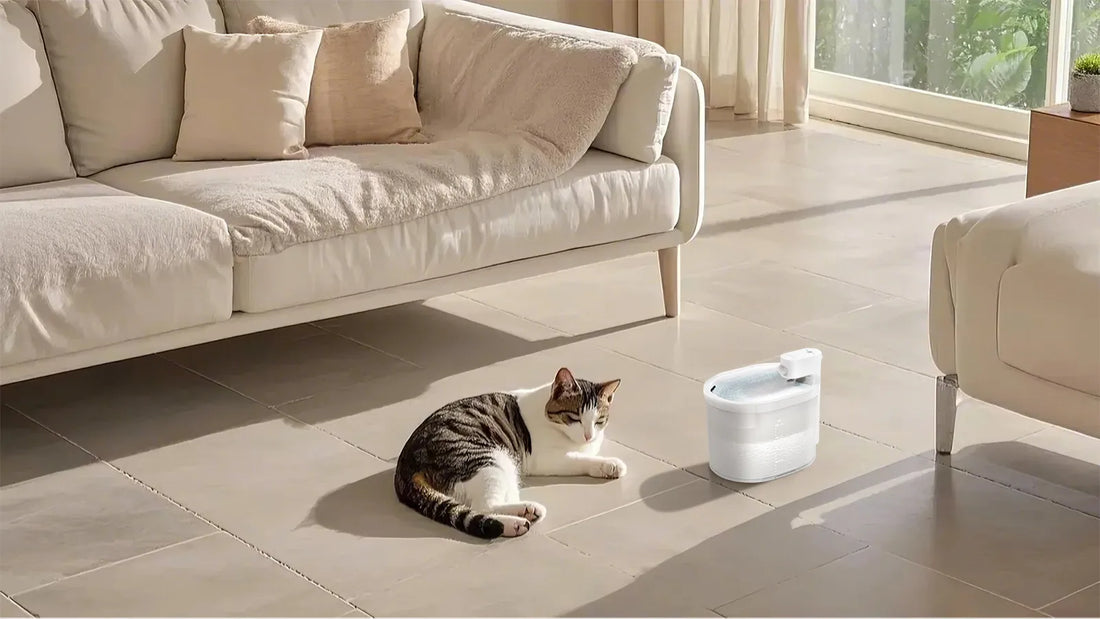Training your cat to use a litter box can seem daunting, but with the right approach, it can be a smooth and stress-free process. Whether you're a first-time cat owner or dealing with a stubborn feline, this guide will walk you through every step to ensure success.
Understanding Your Cat's Needs
Cats are naturally clean animals, and their instinct to bury their waste makes them excellent candidates for litter box training. However, understanding your cat's preferences and behaviors is crucial. Start by observing your cat's habits and preferences to create a comfortable environment for them.
Choosing the Right Litter Box
The first step in training your cat to use a litter box is selecting the right one. Consider the size, shape, and depth of the litter box. Kittens may need a smaller, more accessible box, while larger cats might require a bigger space. Additionally, some cats prefer covered boxes for privacy, while others might feel confined in them.
Selecting the Appropriate Litter
There are various types of cat litter available, including clumping, non-clumping, and natural options. Experiment with different types to see which one your cat prefers. Some cats may be sensitive to certain textures or scents, so it's essential to find a litter that your cat is comfortable with.
Placing the Litter Box Strategically
Location is key when it comes to litter box training. Place the litter box in a quiet, easily accessible area away from your cat's food and water. Avoid high-traffic areas or places with loud noises, as these can deter your cat from using the box.
Introducing Your Cat to the Litter Box
Once you've set up the litter box, introduce your cat to it gently. Place your cat in the box after meals or naps, as these are times when they are most likely to need to go. Encourage them to dig in the litter with their paws, and praise them when they use the box correctly.
Maintaining a Clean Litter Box
Cats are more likely to use a clean litter box, so regular maintenance is essential. Scoop the box daily to remove waste and replace the litter as needed. A dirty litter box can lead to accidents outside the box and make training more challenging.
Addressing Common Challenges
If your cat is not using the litter box, consider possible reasons such as stress, health issues, or dissatisfaction with the litter box setup. Consult with a veterinarian if you suspect a medical problem, and make adjustments to the litter box environment as needed.
Positive Reinforcement and Patience
Positive reinforcement is a powerful tool in litter box training. Reward your cat with treats, praise, or playtime when they use the litter box correctly. Be patient and consistent, as it may take time for your cat to fully adapt to the new routine.
Transitioning from Outdoor to Indoor Litter Box Use
If your cat is used to going outside, transitioning them to an indoor litter box can be challenging. Gradually reduce their outdoor access and encourage them to use the litter box indoors. Provide multiple litter boxes in different locations to make the transition easier.
Training Multiple Cats
If you have multiple cats, ensure that each cat has access to their own litter box. Cats can be territorial, and sharing a litter box may lead to stress or accidents. Provide one litter box per cat, plus an extra one, to avoid conflicts.
Dealing with Accidents
Accidents are a normal part of the training process. Clean up any messes promptly and thoroughly to remove any lingering odors that might attract your cat back to the same spot. Avoid punishing your cat, as this can create fear and hinder the training process.
Monitoring Your Cat's Health
Regularly monitor your cat's litter box habits for any changes in frequency, consistency, or behavior. Sudden changes could indicate a health issue that requires veterinary attention. Keeping an eye on your cat's health can help prevent problems and ensure they continue to use the litter box correctly.
Creating a Stress-Free Environment
Stress can significantly impact your cat's litter box habits. Create a calm and comfortable environment by providing plenty of hiding spots, scratching posts, and toys. Minimize changes in the household and give your cat time to adjust to new situations.
Final Tips for Success
Remember that every cat is unique, and what works for one may not work for another. Stay patient, observant, and flexible in your approach. With time, consistency, and positive reinforcement, your cat will learn to use the litter box reliably.
Training your cat to use a litter box doesn't have to be a frustrating experience. By understanding your cat's needs and following these steps, you can create a positive and effective training routine. Your cat will thank you, and you'll enjoy a cleaner, more harmonious home.













